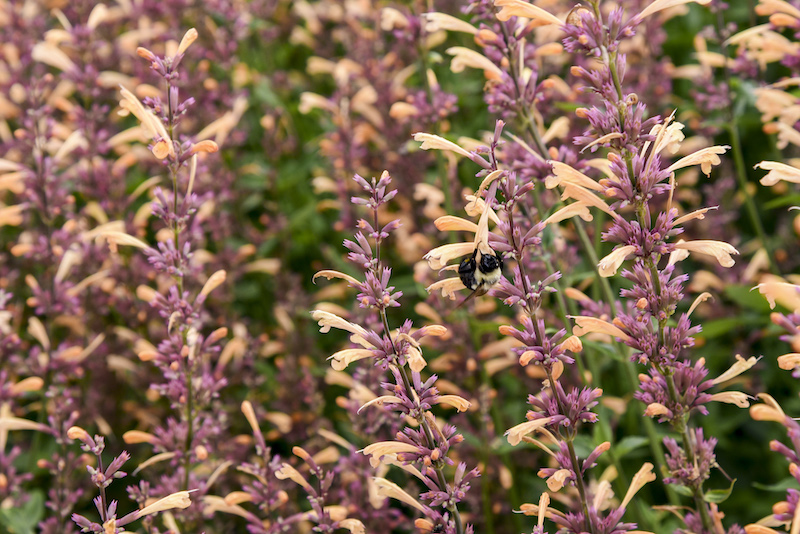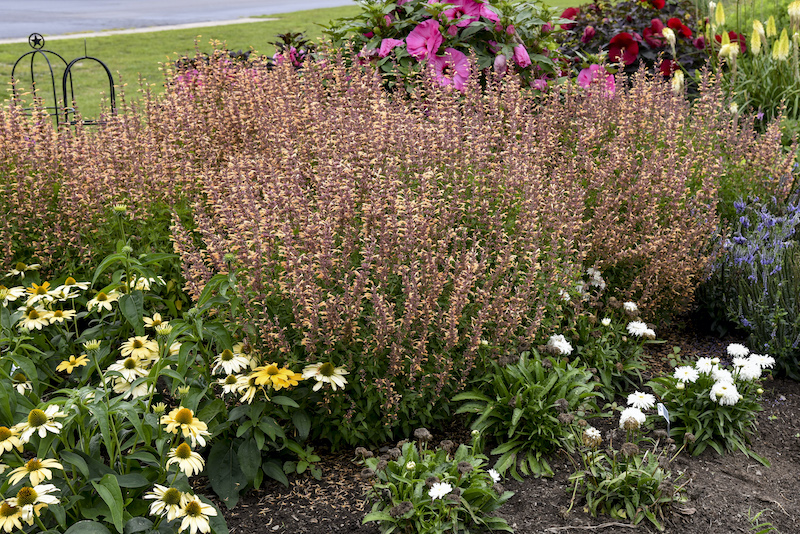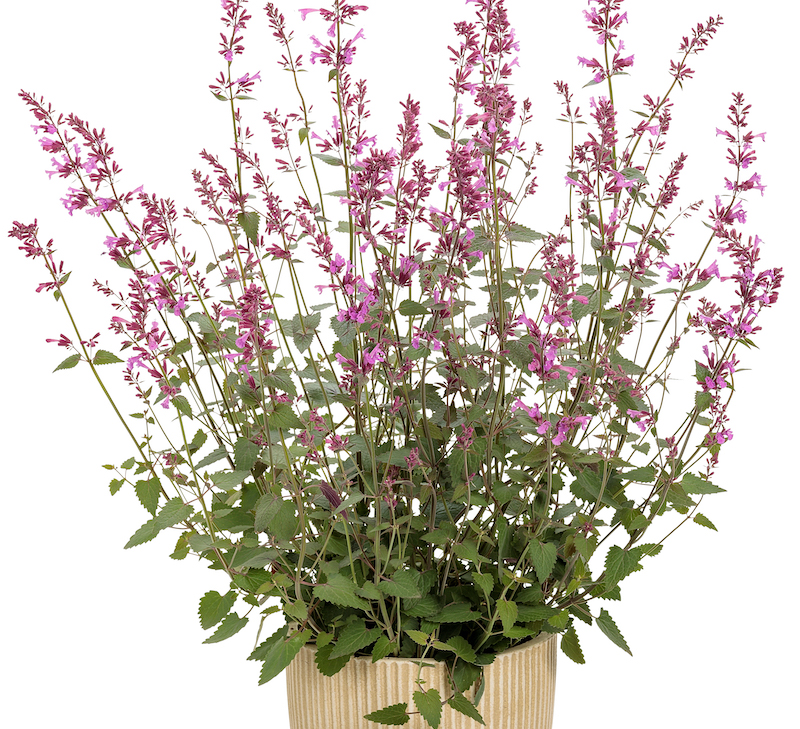Growing Agastache
Hyssop plants, commonly known as hummingbird mint and scientifically as Agastache, are members of the mint family. It is a perennial herb plant grown in US Hardiness Zones 4-8. Agastache is extremely attractive to many pollinators including hummingbirds, butterflies, and bees. It is useful in borders, wildflower gardens, pollinator, and herb gardens and can easily be grown in containers.

Many varieties of Agastache are available and feature flower colors ranging from white, pink, salmon, and shades of violet-blue. All parts of the plant are aromatic; the leaves can be used to make teas and jellies, used fresh in salads, included in your favorite baking recipes, or added in liqueur. Agastache is also often used as a medicinal herb. It has a bushy form with small narrow leaves and flower stalks reaching about 2 feet in height. This low-maintenance, drought-resistant perennial is a useful choice for many gardens.
Planting Agastache
For best flowering and balanced growth, plant Agastache in an area that receives at least 6-8 hours of direct sunlight daily. Prune in early spring to encourage full growth in the summer. Grow Agastache in well-draining soil; you can mix in small gravel or sand to increase drainage. Agastache plants will spread via underground horizontal roots known as rhizomes, and can easily self-seed to produce additional plants the following growing season.

Watering Agastache
After planting, water Agastache regularly in its first growing season to establish the root system. Once mature, Agastache is tolerant of less frequent watering and often can sustain itself on rainfall alone. Water mature plants deeply during extended periods of drought.
Fertilizing Agastache
Additional fertilization is not necessary for Agastache as it can grow quite well in lean, dry soils. You can apply a natural compost tea to feed Agastache a few times per growing season. This has the added benefit of feeding the beneficial organisms down in the soil, which break down the nutrients and release them to the plant's roots. You can also opt to top-dress the root zone with an organic kelp or alfalfa fertilizer, or commercial compost mix.
Pruning Agastache
Remove any winter-damaged leaves and stems in early spring to allow for new growth to develop. Deadheading spent flowers will encourage additional blooms and keep the foliage looking tidy.
Caring For Agastache in Pots
Agastache can be grown successfully in containers as long as drainage is sufficient. Based on the variety, look for a pot that has a diameter that will accommodate Agastache's mature width. Use a lean soil mix that is well draining, preferably with added sand or extra perlite. Feed potted plants with organic alfalfa, kelp, or seaweed fertilizer a few times during the growing season, and follow package instructions.

Winter Care for Agastache
Agastache is a hardy plant that can tolerate cold temperatures. You can insulate the plant's roots by applying a few inches of natural mulch around the base of the plant. Make sure to pull mulch away from the main stem.
 |
Author Chris Link - Published 03-15-2023 |
